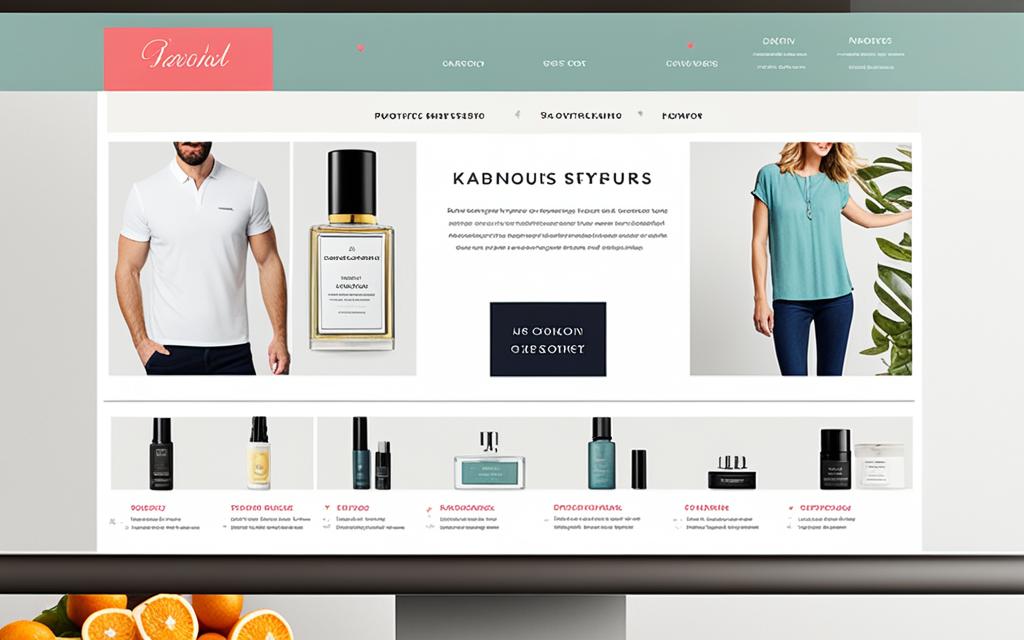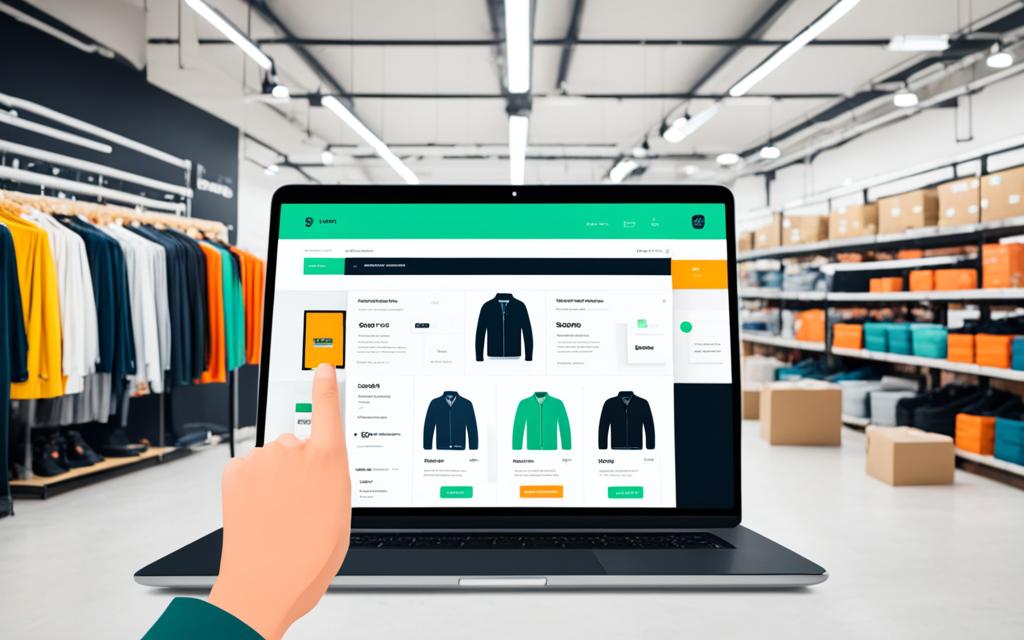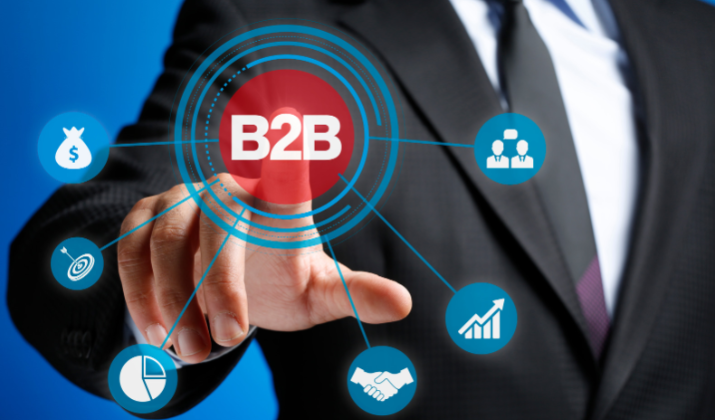Are you considering starting your own dropshipping business but unsure which platform to choose?
Look no further than Shopify, the leading ecommerce platform that has revolutionized the dropshipping industry.
With its user-friendly interface and robust features, Shopify provides everything you need to create and manage a successful online store.
But is Shopify really the best option for dropshipping? Let’s dive into the details and find out.
What is Dropshipping?
Dropshipping is a business model where a retailer or ecommerce store sells products that are manufactured, warehoused, and shipped by a third-party supplier.
The retailer only pays for products after they have made a sale, eliminating the need to hold inventory.
This makes dropshipping a low-risk option for first-time entrepreneurs and allows businesses to test new product lines without investing in inventory upfront.
Is Shopify Good for Dropshipping?
Let’s answer the question at hand before we dig deep into dropshipping with Shopify.
Yes, Shopify is an excellent platform for dropshipping. It offers numerous advantages for entrepreneurs looking to start a dropshipping business.
Shopify simplifies the eCommerce process by combining all stages of eCommerce, providing easy-to-use solutions, and allowing integration with third-party applications for customization and performance enhancement.
With Shopify, entrepreneurs can launch their dropshipping business without any upfront investments, eliminate the need to hold inventory, save on shipping costs, and focus on growing their business efficiently.
Shopify’s dropshipping model involves selling products online without holding inventory, where suppliers directly ship orders to customers, making the process more streamlined and cost-effective.
Overall, Shopify’s features, user-friendly services, and automation make it a highly recommended platform for successful dropshipping ventures.
Try Shopify free followed by first month at just $1. No credit card required. Limited Time Offer.
How to Dropship with Shopify?
To dropship with Shopify, follow these steps:
1. Finding a Dropshipping Niche
When starting your dropshipping business, one of the most important steps is finding a profitable niche. You want to target an under-served niche that has unique customer needs, preferences, or interests.
By catering to these specific needs, you can differentiate yourself from the competition and attract a loyal customer base.
To identify an under-served niche, conducting keyword research is essential. Use tools like Google Keyword Planner and Google Trends to discover areas of underserved demand.
Look for keywords and trends that show high search volume and low competition. This will indicate a potential market gap that you can capitalize on.
However, it’s not just about finding a niche with high demand and low competition. You also need to consider product availability.
Some niches may have limited product options, which can hinder your ability to offer a diverse range of products.
It’s important to ensure that there are enough quality products available within your chosen niche to meet customer expectations.
If you find that a niche you’re interested in lacks product variety, consider working with a dropshipping supplier to develop a new product line.
This way, you can fill the gap in the market and provide unique products that cater to your target audience’s needs.
Collaborating with a dropshipping supplier can also help you source high-quality products and streamline your inventory management processes.
Remember, finding a profitable dropshipping niche requires thorough research and analysis. Take the time to understand your target audience and their unique needs.
By focusing on an under-served niche and addressing the specific requirements of your customers, you can position your dropshipping business for success.
2. Understanding Your Target Audience
To effectively market your dropshipping business, it is crucial to have a deep understanding of your target audience.
By conducting market research, you can gain valuable insights into their online behavior, preferred marketing channels, and product preferences.
This can be done through surveys, interviews, or by analyzing existing data. By understanding their needs and motivations, you can create marketing strategies that effectively engage and convert potential customers.
Some key areas to explore during market research include:
- Online behavior: Identify which online platforms your target audience frequents and how they engage with content. This will help you determine the most effective marketing channels to reach them.
- Preferred marketing channels: Discover which marketing channels, such as social media, email, or search engine marketing, are most likely to resonate with your target audience.
- Product preferences: Determine which types of products or features your target audience is most interested in. This will help you select the right products to offer in your dropshipping store.
By investing time in understanding your target audience, you can develop marketing strategies that align with their preferences and effectively drive traffic and conversions to your dropshipping store.
Gather valuable insights using tools like Facebook Audience Insights and Google Trends.
Facebook Audience Insights allows you to learn more about your audience’s interests, demographics, and online activity. This data can help you identify key trends and patterns that can inform your marketing strategies.
Google Trends, on the other hand, provides information on search queries related to your industry or products. By analyzing search trends, you can identify popular keywords and topics that are relevant to your target audience.
This can guide your content creation and SEO efforts to ensure you are reaching the right people at the right time.
Try Shopify free followed by first month at just $1. No credit card required. Limited Time Offer.
3. Selecting a Product & Dropshipping Supplier
Once you have identified your niche and target audience, the next step is to carefully select the right product category that aligns with their needs and preferences.
Conduct thorough research to gain insights into popular products within your niche and determine what will appeal most to your customers.
When it comes to finding a dropshipping supplier, it is essential to partner with a reputable and reliable company that offers high-quality products and dependable shipping services.
Look for suppliers who have a proven track record and positive reviews from other dropshippers. This ensures that you can consistently provide your customers with superior products and a seamless buying experience.
A great way to simplify the process of finding and connecting with suppliers is to use a Shopify dropshipping app.
These apps, such as Spocket, DSers, or Modalyst, offer a wide range of suppliers and products, making it easy to import them directly into your Shopify store.
By automating the order fulfillment process, you save time and effort, allowing you to focus on other aspects of your business.
Take the time to research and partner with suppliers who align with your brand values and provide high-quality products to ensure customer satisfaction.
4. Building Your Ecommerce Store
When it comes to building your ecommerce store, the Shopify platform is your go-to solution.
With its user-friendly interface and comprehensive features, Shopify makes it simple for you to create a professional online store that attracts and engages customers.
First, sign up for a Shopify account and choose a domain name that reflects your brand and niche. Your domain name is your online address and plays a crucial role in establishing your brand identity.
Make sure it is memorable and relevant to your ecommerce store.
Once you have set up your Shopify account and secured your domain name, it’s time to start designing your website.
Shopify provides a store builder and customizable themes that allow you to showcase your products in a visually appealing way.
Choose a theme that aligns with your brand image and customize it to suit your preferences.
Customization is key to creating a unique and engaging shopping experience for your customers. Customize your store’s layout, color scheme, and product display to match your brand and cater to your target audience.
By tailoring your store to your customers’ preferences, you can enhance their overall shopping experience and increase conversions.
Optimizing Your Store for Mobile
In today’s mobile-driven world, it’s essential to ensure that your ecommerce store is optimized for mobile devices.
With a significant portion of online traffic coming from smartphones and tablets, a mobile-friendly website is crucial for providing a seamless browsing and shopping experience.
Shopify’s responsive design ensures that your store looks great and functions flawlessly on all screen sizes. It automatically adapts your website’s layout and design to fit the screen of the device your customers are using.
This means that whether they’re browsing on a desktop, smartphone, or tablet, your online store will always look professional and be easy to navigate.
5. Deciding on a Business Structure
Choosing the right business structure can impact your personal liability and determine how your business is taxed.
Two common options for dropshipping businesses are a sole proprietorship and a limited liability company (LLC).
A sole proprietorship is the simplest and most common business structure. As a sole proprietor, you have full control over your business and its profits.
However, there is no legal distinction between you and your business, which means you are personally liable for any debts or legal issues that arise.
This structure is ideal for solo entrepreneurs who want to keep things simple and have full control over their business.
On the other hand, forming a limited liability company (LLC) can provide increased protection for your personal assets.
An LLC is a separate legal entity, which means your personal assets are generally protected from business debts and liabilities.
This structure offers flexibility in terms of taxation, as you can choose to be taxed as a sole proprietor, partnership, or corporation.
Forming an LLC requires filing formation documents with the appropriate state authorities and adhering to any ongoing compliance requirements.
When deciding on a business structure, it is important to consult with a legal professional who can provide guidance based on your specific needs and local regulations.
They can help you understand the implications of each structure, such as tax obligations, liability protection, and administrative requirements.
This will ensure that you choose the best legal entity for your dropshipping business and comply with all necessary laws and regulations.
Try Shopify free followed by first month at just $1. No credit card required. Limited Time Offer.
6. Getting Your Finances in Order
Start by creating a budget that outlines your expected expenses and projected revenue. This will help you keep track of your financial obligations and ensure that you allocate your resources effectively.
Establish a system for bookkeeping to track your expenses and revenue. This can be as simple as using a spreadsheet or investing in accounting software that automates the process for you.
By maintaining accurate records, you will have a clear understanding of your financial position and can identify areas for improvement.
When it comes to payment processing, it’s important to offer your customers seamless and secure transaction options. Set up reliable payment gateways that allow for easy and convenient transactions.
Consider partnering with trusted payment processors like PayPal, Stripe, or Square to streamline the payment process for your customers.
Taxes are an unavoidable aspect of running a business. Consult with a tax professional to ensure compliance with tax obligations specific to your dropshipping business.
They can provide guidance on sales tax collection and remittance, as well as any other tax requirements based on your business structure and location.
It’s also a good practice to set aside funds for tax payments. By keeping the necessary amount separate from your operational funds, you can meet your tax obligations without impacting your day-to-day business operations.
Remember, getting your finances in order is not a one-time task.
Regularly review and update your budget, bookkeeping practices, and tax compliance to effectively manage your finances and support the growth of your dropshipping business.
7. Marketing Your Dropshipping Store
Effective marketing is essential for attracting customers to your dropshipping store.
To maximize your reach and drive sales, it’s important to develop a comprehensive marketing strategy that encompasses various channels and tactics.
One key component of your marketing strategy should be leveraging social media platforms such as Facebook and Instagram.
These platforms have extensive user bases and offer robust advertising options to promote your products. Use eye-catching visuals and engaging captions to showcase your products and capture the attention of your target audience.
Interact with your followers by responding to comments and messages promptly, cultivating a sense of trust and engagement.
Email marketing is another powerful tool to connect with potential customers and nurture relationships with existing ones.
Send regular newsletters and promotional offers to your email subscribers, providing them with valuable content and exclusive discounts.
Ensure your emails are personalized, relevant, and visually appealing to encourage engagement and increase conversions.
Investing in search engine optimization (SEO) can significantly boost your store’s visibility and organic traffic.
Research relevant keywords and incorporate them naturally into your website’s content, meta tags, and product descriptions.
Generate high-quality, informative content that addresses your audience’s pain points and establishes your store as an authoritative source in your niche.
Additionally, focus on building backlinks from reputable websites to improve your search engine rankings.
Consider collaborating with influencers in your industry to expand your reach and gain credibility. Seek influencers whose followers align with your target audience and whose values align with your brand.
Partnering with influencers can bring authenticity to your marketing efforts and create a buzz around your products.
Try Shopify free followed by first month at just $1. No credit card required. Limited Time Offer.
8. Analyzing & Improving Your Offering
Data Analysis
Data plays a crucial role in understanding the effectiveness of your business operations. Examine key metrics such as sales performance, customer acquisition, and product popularity.
Analyzing this data allows you to identify trends, patterns, and areas for improvement, enabling you to make data-driven decisions to boost your dropshipping business’s success.
Customer Feedback
Customer feedback provides valuable insights into your products, services, and overall customer experience. It helps you understand your customers’ needs, preferences, and pain points.
Encourage customers to share their feedback through surveys, reviews, and ratings. Leverage social media platforms to engage with your customers and encourage open communication.
Actively listen to your customers’ feedback and use it to refine your product offerings. Consider their suggestions for new products, additional features, or improvements to existing ones.
By addressing their feedback, you demonstrate your commitment to delivering an exceptional customer experience.
Optimizing Your Product Assortment
Based on data analysis and customer feedback, optimize your product assortment to align with market demand, trends, and customer preferences.
Determine which products are performing well and prioritize them. Explore new product opportunities within your niche, ensuring they cater to your target audience’s needs and interests.
Consider expanding your offering by introducing complementary or related products. This not only increases customer engagement but also offers cross-selling and upselling opportunities.
By regularly evaluating and updating your product assortment, you can ensure it remains relevant and captivating for your customers.
Enhancing the Customer Experience
The customer experience is a critical factor in cultivating loyalty and attracting repeat business. Continuously seek ways to enhance the overall experience your dropshipping store provides.
Improve website navigation, optimize page loading speed, and ensure a seamless checkout process.
Invest in exceptional customer service by promptly addressing inquiries, concerns, and returns. Implement personalized touches, such as thank-you notes, packaging inserts, or loyalty programs, to make customers feel valued and appreciated.
Additionally, continuously refine your shipping and delivery processes. Optimize logistics to reduce delivery times and ensure timely order fulfillment.
Offer transparent tracking and notifications to keep customers informed throughout the shipping journey.
Remember, continuous improvement is key to stay competitive in the dynamic dropshipping landscape.
Analyzing data, gathering customer feedback, optimizing your product assortment, and enhancing the customer experience are ongoing efforts that position your business for long-term success.
Embrace this iterative mindset and adapt your strategies to remain at the forefront of your industry.
Try Shopify free followed by first month at just $1. No credit card required. Limited Time Offer.
Conclusion
Starting a dropshipping business with Shopify offers entrepreneurs a low-risk, user-friendly, and scalable solution.
By following the steps outlined in this guide, you can start your dropshipping business without any hassles.
Remember that success in dropshipping requires dedication, ongoing analysis, and a focus on providing value to your customers.
Shopify gives you all the tools, features and support needed to create a successful dropshipping business.
Get Shopify today!















